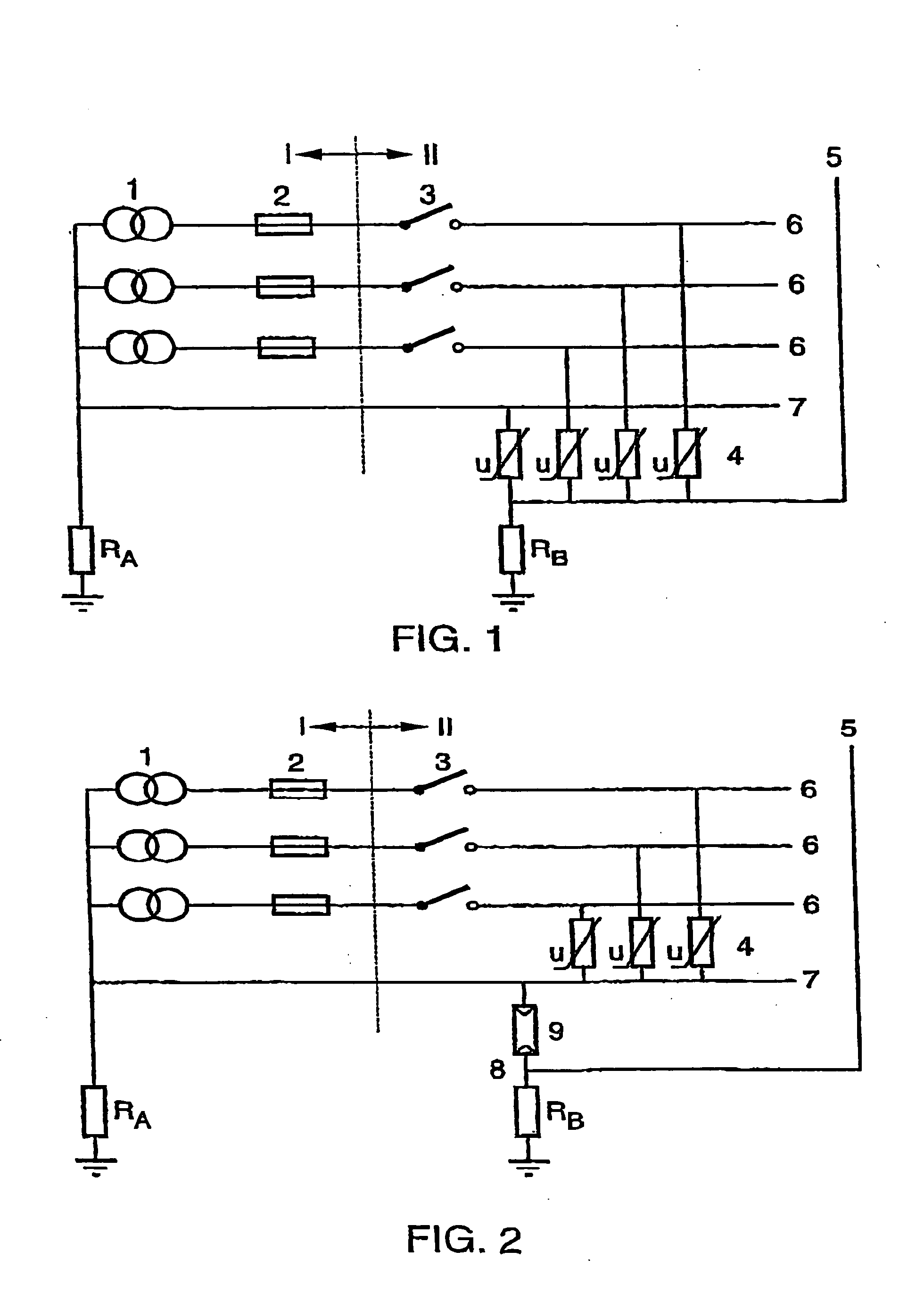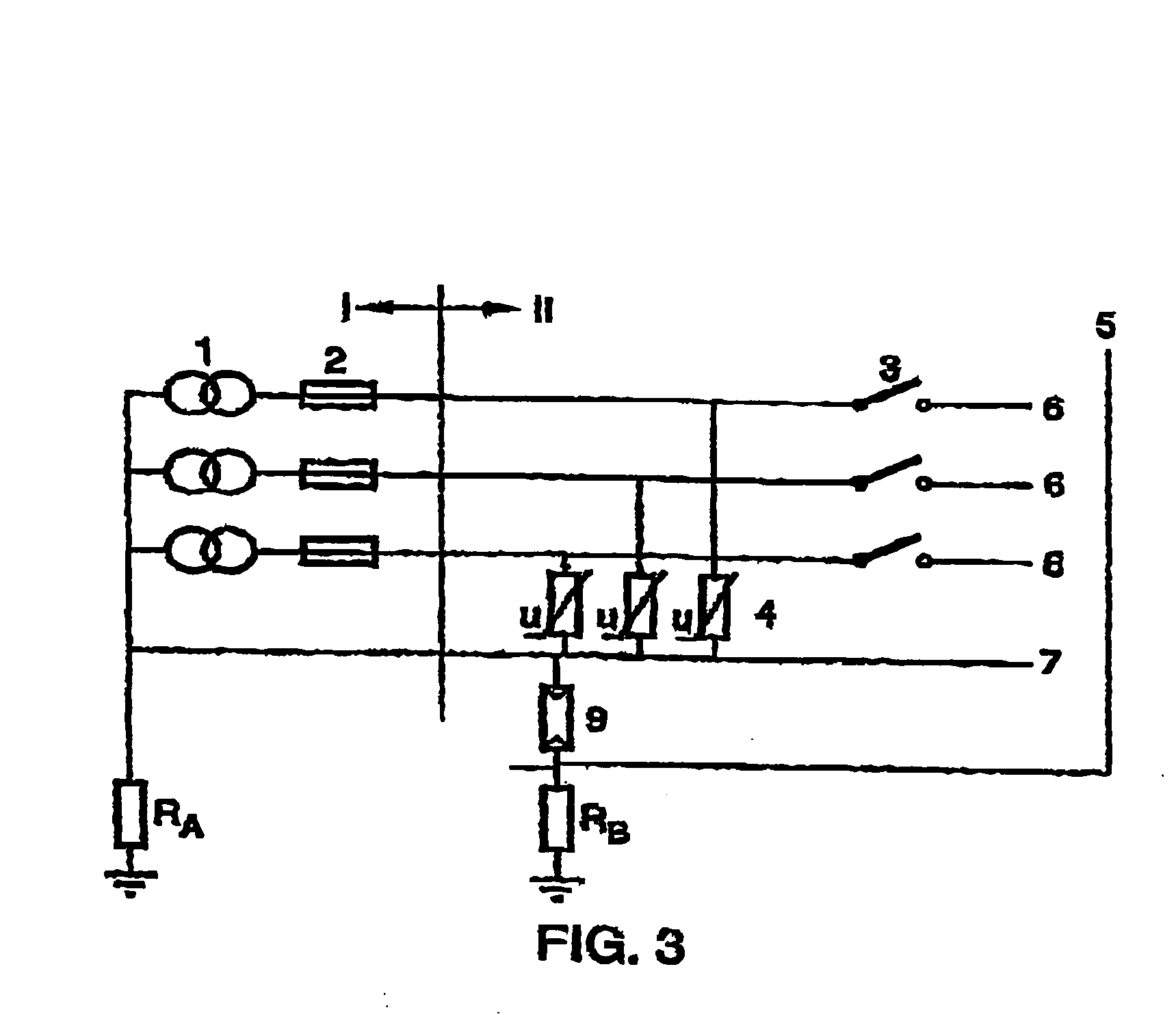System for overvoltage protection
a technology of overvoltage protection and surge protection, which is applied in the direction of overvoltage protection resistors, emergency protective arrangements for limiting excess voltage/current, and arrangements responsive to excess voltage, etc., can solve the problems of parasitic flash-over of charge to the electrical conductor of the power supply, power supply failure, and power supply voltage rise, etc., to achieve easy assembly, less mechanical forces, and cost-effective
- Summary
- Abstract
- Description
- Claims
- Application Information
AI Technical Summary
Benefits of technology
Problems solved by technology
Method used
Image
Examples
Embodiment Construction
[0032] In FIG. 1, which shows the state of the art, I indicates the part which is positioned in the space of the electricity supplier. Three windings of a transformer are referenced by number 1, the secondary winding of the transformer being in a star configuration of which the star point is earthed. The impedance existing between the star point and the point of the zero potential is indicated by Ra, which usually has a very low value, e.g., a 0.5 Ohm and a self inductance of e.g., 5 μH. The secondary windings of the transformer usually have a resistance value of about 0.01 Ω and a self inductance of 50 μH. In this space, also the fuses 2 are positioned.
[0033] The equipment of the user, in the part indicated with II, comprises a three phase switch 3. Each of the conductors (phase and neutral) is connected behind the switch 3 to a connection 5 via a surge arrester 4, such as a voltage dependent resistor or varistor. The connection 5 is connected to the frame of the switch closet (or...
PUM
 Login to View More
Login to View More Abstract
Description
Claims
Application Information
 Login to View More
Login to View More - R&D
- Intellectual Property
- Life Sciences
- Materials
- Tech Scout
- Unparalleled Data Quality
- Higher Quality Content
- 60% Fewer Hallucinations
Browse by: Latest US Patents, China's latest patents, Technical Efficacy Thesaurus, Application Domain, Technology Topic, Popular Technical Reports.
© 2025 PatSnap. All rights reserved.Legal|Privacy policy|Modern Slavery Act Transparency Statement|Sitemap|About US| Contact US: help@patsnap.com



